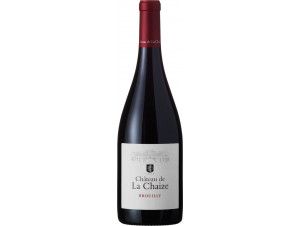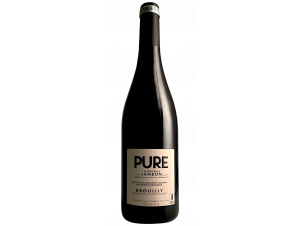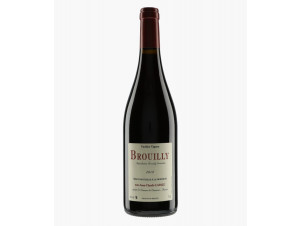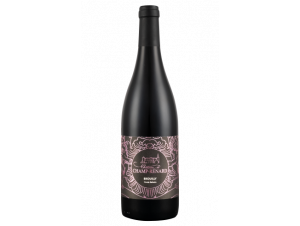You have no items in your shopping cart.
Wine Brouilly
The AOC Brouilly is the largest appellation in the Beaujolais region: 20% of Beaujolais wines are now produced in Brouilly. These wines are very varied, as the soils are also varied. The vines are planted in the communes of Quincié-en-Beaujolais, Charentay, Cercié, Saint-Lager, Odenas and Saint-Étienne-la-Varenne. Read more on Brouilly
-
Top Selling
-
Top Selling
-
Top Selling
- -40%
- -20%
- -25%
- -20%
- -20%
- -30%
- -10%
Appellation Brouilly
Mont Brouilly, in the heart of the vineyards
The name of the AOC Brouilly comes from the Mont Brouilly, which lies at the centre of the appellation. Legend has it that this mountain owes its name to a notable Roman officer called Brulius, who settled in the region after conquering it for the Roman Empire. The cultivation of wine in the area dates back to antiquity, when Brulius decided to plant his vines here, as the mountain had particularly good sunshine for growing grapes.
Over the following centuries, vines continued to be grown here. In the 19th century, many plagues began to affect the region, such as phylloxera, powdery mildew and frost. The winegrowers therefore built and inaugurated the Mont Brouilly Chapel in 1857, to protect them from these evils and to perpetuate the cultivation of vines in the region. Since 1938, the wines of Mont Brouilly have benefited from the AOC Brouilly, which has allowed the development of the terroir and wine tourism in the region.
Geographically, the Brouilly appellation covers the slopes of the eponymous mountain, to the west of the commune of Belleville, in the Rhône region: Brouilly is in fact the southernmost AOC of the Beaujolais. Beaujolais is a region in the east of France, which has the Cru label, a distinctive sign of quality within the vineyard itself, relating to the soil and climate, but also to the winemaking. The AOC covers a total area of 1,393 hectares, with a planting density of 6,000 vines per hectare, and a fairly impressive yield of 58-63 hectolitres per hectare on average. More than 5 million bottles are produced each year!
Granite soils at the origin of the inimitable taste of Brouilly
As Mont Brouilly was a volcano a long time ago, the soils of the AOC are particularly fertile and exceptional for vine growing. The soils of the Beaujolais are quite varied depending on the locality. They are mostly granitic in the Beaujolais, 52%, but only 40% in the Brouilly appellation. The soil is also composed of bluestone, at 10%, and alluvium, at around 35%.
The granite soils are important for the vines because they are the only water reservoirs in the soils of the region: in the subsoil, the granite becomes friable saprolite. The alluvial soils, composed mainly of pebbles, allow water to pass into the subsoil. Finally, the bluestones, of volcanic origin and therefore older than the granite, are very compact and black, and partially make up the subsoil.
This great diversity of subsoils and soils makes for a particularly interesting cultivation of Gamay, as it does not need much water to grow. It is the only red grape variety authorised in the Brouilly appellation. Only red wines can receive the AOC Brouilly, but some white grape varieties are also allowed in the blends such as Aligoté, Chardonnay and Melon, and can reach up to 15% of the blend.
The great particularity of Brouilly wines comes from their elaboration: indeed, the winegrowers traditionally practice carbonic maceration. This process takes place at harvest time. Once the grapes have been picked and sorted, the whole bunches are locked up in sealed vats for 4 to 7 days. In this way, a first fermentation begins to take place within the grape berry. It is therefore essential that the berries are not crushed, which would prevent this stage. Once carbonic maceration has taken place, the grapes are crushed and the winemaking process continues as normal. The carbonic maceration allows the development of certain fruit aromas, markers of the typicality of the AOC Brouilly wines.
How to taste a Brouilly?
To the eye, Brouilly wines have a ruby colour, very bright, with purple highlights. These are wines that are charming to the eye, and promise to be very tasty.
The nose is dominated by fruit: strawberry, raspberry and sometimes even violet. The nose is clean, very intense and greedy.
On the palate, we find the fruit, a lot of greed and delicacy. The strawberry and raspberry notes are confirmed and intensify, developing also notes of cherry and blackberry. The wine is fresh and long, fine but dense, like many wines grown on granite soils.
AOC Brouilly wines are generally drunk in their early years, between 2 and 5 years, although it is quite possible to keep some great wines from good vintages for up to 10 years, under good storage conditions.
The great vintages of Brouilly
The 2005, 2009 and 2011 vintages have been called the vintages of the millennium! More recently, the 2015, 2016, 2017 and 2018 vintages are very successful and will offer you great tasting experiences.
What to drink with a Brouilly?
This very fresh wine is ideal for accompanying dishes traditionally enjoyed from spring to summer: Bresse poultry, charcuterie, grilled white meats or summer salads, will particularly enhance Brouilly wines by letting their beautiful fruity freshness express itself. Brouilly is also a wine that is very pleasant to drink as an aperitif! A little anecdote: it is the wine that is most often found in Parisian bistros, as it is so easy and pleasant to drink.
Many domains to discover in Brouilly
Dominique Piron:
Dominique Piron is one of the most important producers in the Beaujolais. He produces 21 different wines in several appellations of the region, always in 100% Gamay and in the respect of tradition and biodiversity.Château de la Terrière:
This property dating from the Middle Ages (14th century), stands in the heart of the Beaujolais Crus, facing Mont Brouilly. The Barbet family has been growing Gamay and Pinot Noir on its 28 hectares of vines for 9 generations.
Beaujolais et Lyonnais appellations








































 TWIL - Achat de Vin
TWIL - Achat de Vin


